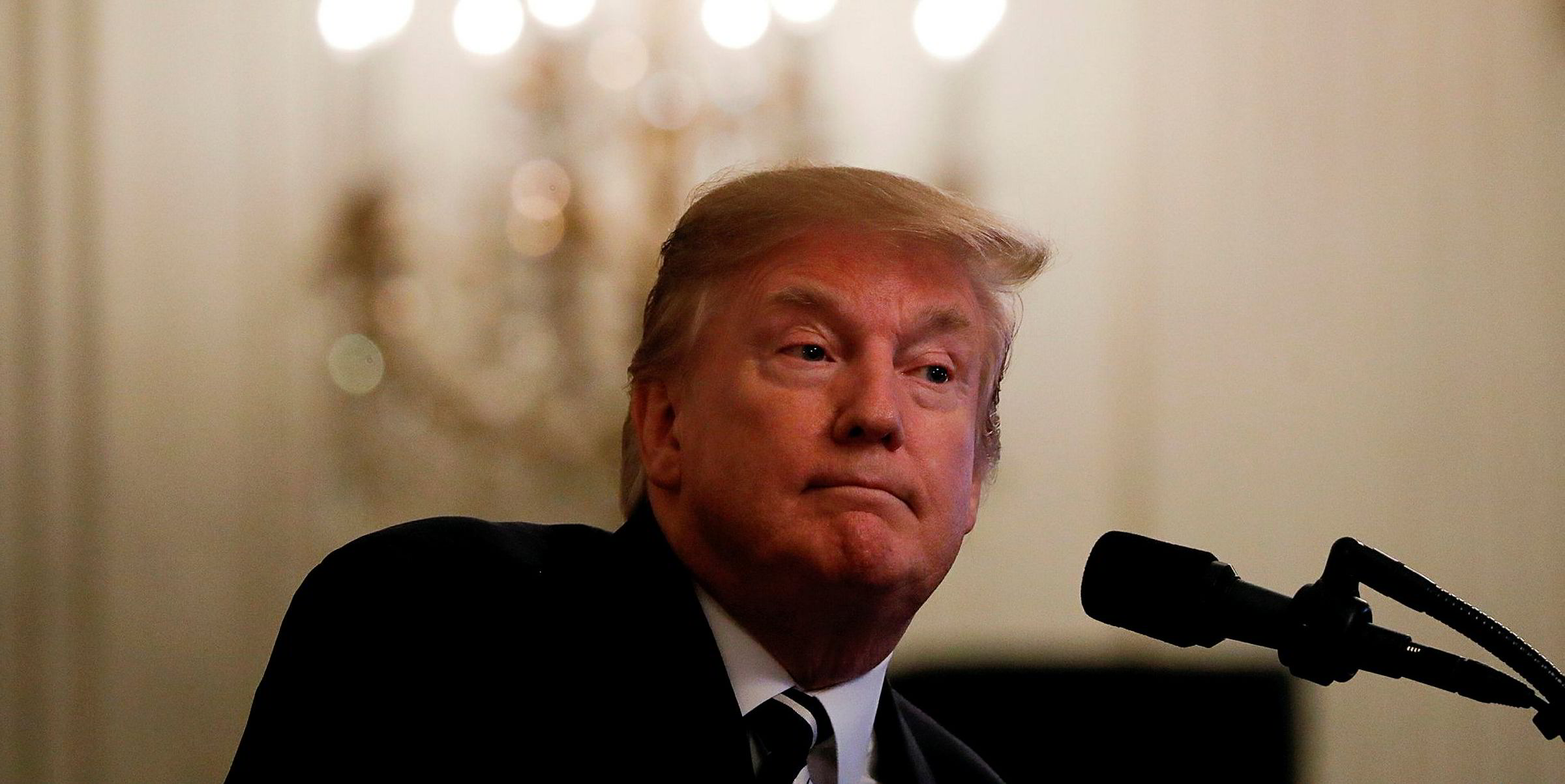Museum Funding In Jeopardy: Examining The Impact Of Trump's Budget

Table of Contents
Direct Funding Cuts to Museums and Cultural Institutions
Trump's proposed budget significantly slashed funding for the National Endowment for the Arts (NEA) and the National Endowment for the Humanities (NEH), two crucial sources of federal arts funding for museums and cultural institutions. These cuts directly impacted numerous museums and programs nationwide, leading to immediate and devastating consequences. The percentage reduction, while varying across years and specific programs, resulted in substantial financial hardship for many institutions.
- Examples of affected programs: Grants supporting traveling exhibitions, educational outreach initiatives, conservation projects, and museum infrastructure improvements were significantly reduced or eliminated entirely.
- Specific museum impacts: Many smaller museums and those reliant on NEA and NEH grants faced immediate challenges, including staff layoffs, program cancellations, and reduced operating hours. The loss of these grants created a domino effect, impacting not just the recipients but the broader cultural landscape.
- Immediate consequences: The immediate consequence of these museum budget cuts was a noticeable decrease in the quality and quantity of services offered to the public. This includes reduced access to educational programs, fewer exhibitions, and a decline in overall visitor experiences.
The Ripple Effect on Museum Operations and Programming
The impact of federal arts funding cuts extended far beyond the institutions that directly received NEA and NEH grants. The ripple effect impacted nearly every aspect of museum operations and programming.
Exhibit Development and Maintenance
Reduced funding directly impacted the ability of museums to develop new exhibits and maintain existing collections. This translated to:
- Fewer new exhibitions: The creation of engaging and informative exhibits requires significant financial investment. The cuts hampered the ability of museums to showcase new acquisitions, research findings, and cultural narratives.
- Neglect of collections: The preservation and conservation of artifacts requires specialized expertise and resources. Budget cuts threatened the long-term survival of invaluable historical items.
- Deferred maintenance: Essential maintenance tasks, such as building repairs and climate control upgrades, were often postponed, putting at risk the safety and longevity of museum collections and infrastructure.
Educational Programs
Museums play a vital role in education and community engagement. However, reduced funding drastically curtailed many vital educational programs:
- School field trips: Many schools relied on subsidized or free museum visits, and these opportunities were significantly reduced or eliminated, limiting access to cultural learning experiences for countless children.
- Outreach initiatives: Community engagement programs – such as workshops, lectures, and interactive exhibits – suffered major setbacks, reducing the museum's ability to serve as a center for learning and community building.
- Teacher training: Programs that train teachers to effectively utilize museum resources for educational purposes were also impacted, limiting the broader reach and effectiveness of museum-based learning.
Accessibility and Inclusivity Initiatives
Museums strive to become accessible and inclusive to diverse audiences. However, funding reductions severely limited their ability to realize these goals:
- Accessibility improvements: Projects designed to improve accessibility for visitors with disabilities (e.g., wheelchair ramps, audio guides) were often delayed or canceled.
- Community outreach: Programs targeting underserved communities were curtailed, diminishing the museum's role in fostering cultural understanding and inclusivity.
- Multilingual resources: Development of materials in multiple languages to reach a wider audience was significantly hampered.
Long-Term Consequences for Cultural Heritage and Public Access
The consequences of sustained underfunding of museums are profound and long-lasting. We risk the loss of invaluable cultural heritage and diminished public access to vital educational resources.
- Loss of artifacts and knowledge: Inadequate funding can lead to the deterioration or loss of irreplaceable historical artifacts and documents, resulting in an irretrievable loss of knowledge and cultural heritage.
- Reduced public access: Financial constraints lead to reduced museum hours, higher admission fees, and the elimination of free or subsidized programs, thus limiting access for low-income communities and families.
- Increased privatization: Underfunding might push museums towards increased privatization, potentially compromising their mission of public service and accessibility.
Advocacy Efforts and Potential Solutions
In response to the threats posed by drastic museum budget cuts, museum professionals, advocacy groups, and concerned citizens have undertaken various efforts to secure additional funding and ensure the long-term sustainability of museums.
- Lobbying efforts: Advocacy groups are actively lobbying government officials to increase funding for the arts and cultural institutions.
- Fundraising campaigns: Museums are increasingly relying on private donations and fundraising initiatives to supplement their budgets.
- Alternative funding models: Museums are exploring creative funding models, such as corporate sponsorships, membership drives, and endowment building, to enhance their financial resilience.
- Public awareness: Raising public awareness regarding the importance of museum funding and the value of cultural heritage is crucial to mobilize support.
Conclusion
The Trump administration's budget cuts to museum funding have had a devastating impact on America's cultural landscape. The cuts have resulted in direct funding losses, a ripple effect across museum operations, and a long-term threat to cultural heritage preservation and public access. The potential loss of invaluable artifacts, educational programs, and community engagement initiatives is deeply concerning. To safeguard museum funding and ensure the future of our nation's cultural heritage, we must act now. Contact your representatives, support museum advocacy groups like the American Alliance of Museums, and contribute to museums to help protect museum funding, securing museum funding for generations to come. Preserving museum funding is not just about protecting buildings and collections; it’s about preserving our shared history and ensuring access to vital cultural and educational resources for all.

Featured Posts
-
 Analyzing The Rumored Open Ai Jony Ive Ai Hardware Deal
May 24, 2025
Analyzing The Rumored Open Ai Jony Ive Ai Hardware Deal
May 24, 2025 -
 Ces Unveiled Europe 2024 Rendez Vous A Amsterdam Pour Les Dernieres Technologies
May 24, 2025
Ces Unveiled Europe 2024 Rendez Vous A Amsterdam Pour Les Dernieres Technologies
May 24, 2025 -
 Kazakhstan Stuns Australia In Billie Jean King Cup Qualifying Tie
May 24, 2025
Kazakhstan Stuns Australia In Billie Jean King Cup Qualifying Tie
May 24, 2025 -
 Dutch Stock Market Slumps Us Trade Tensions Intensify
May 24, 2025
Dutch Stock Market Slumps Us Trade Tensions Intensify
May 24, 2025 -
 Collaboration And Growth The Future Of Bangladesh Europe Relations
May 24, 2025
Collaboration And Growth The Future Of Bangladesh Europe Relations
May 24, 2025
